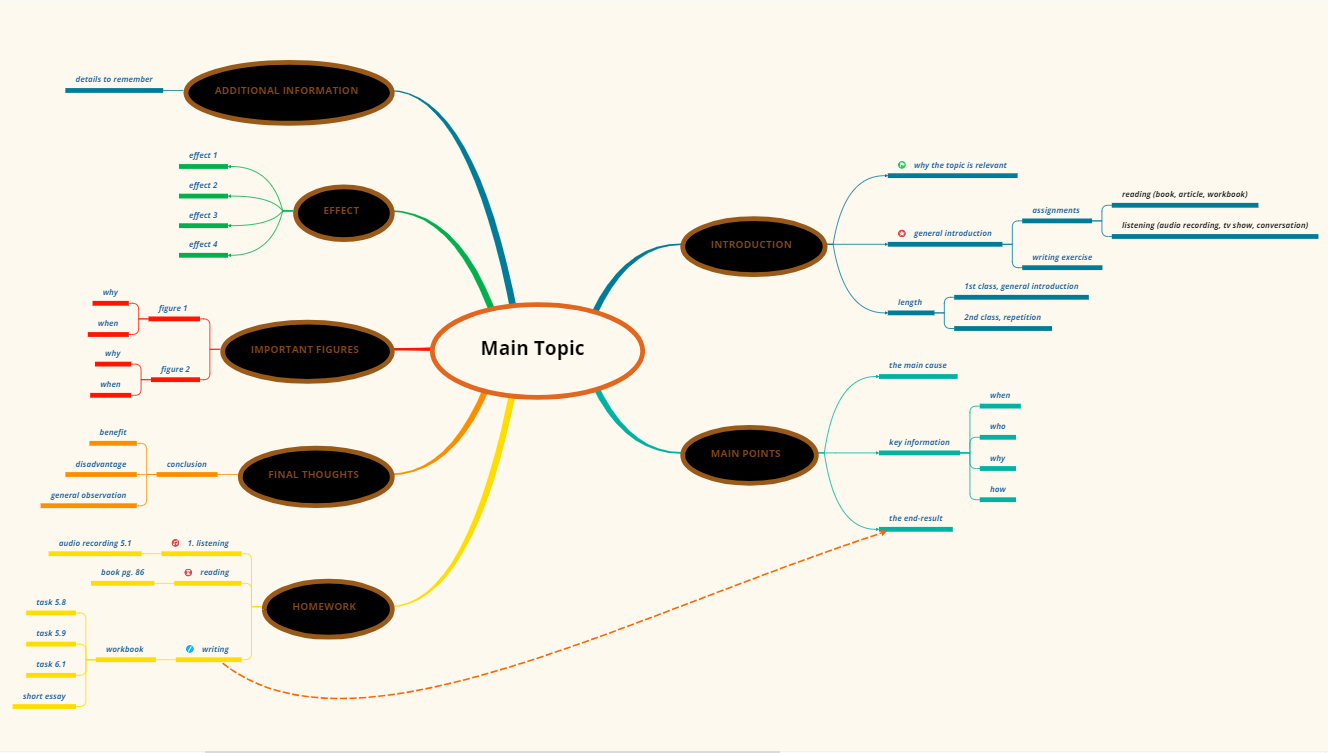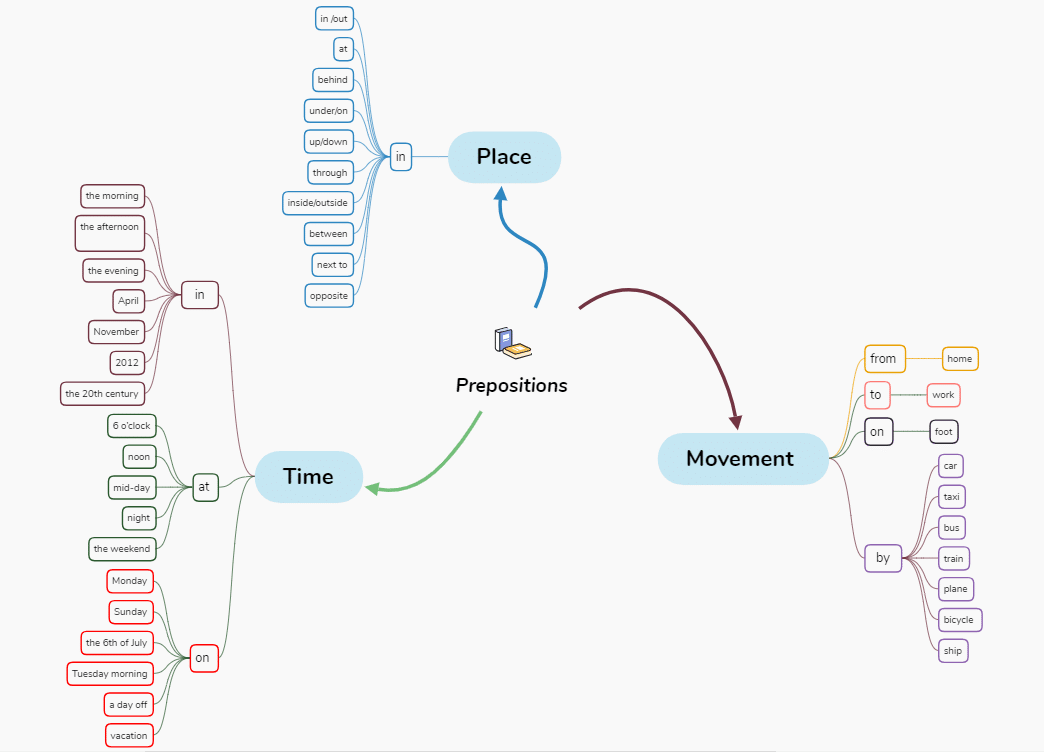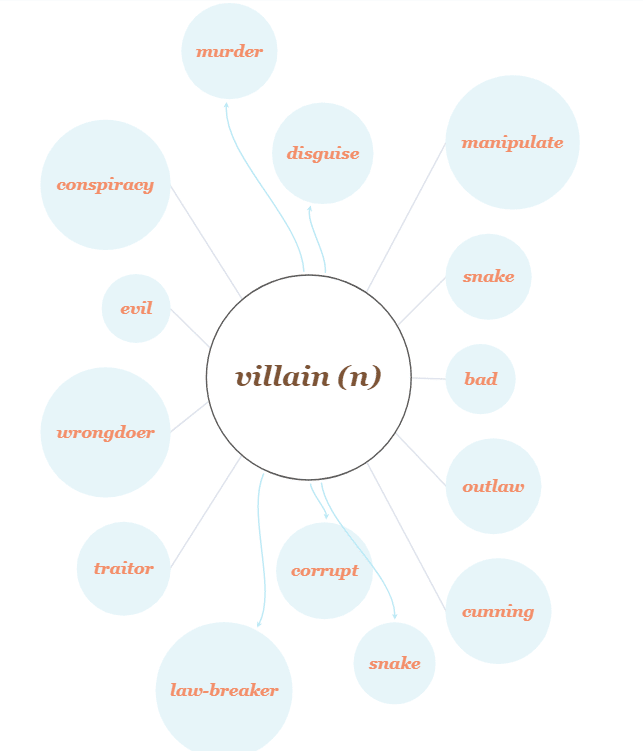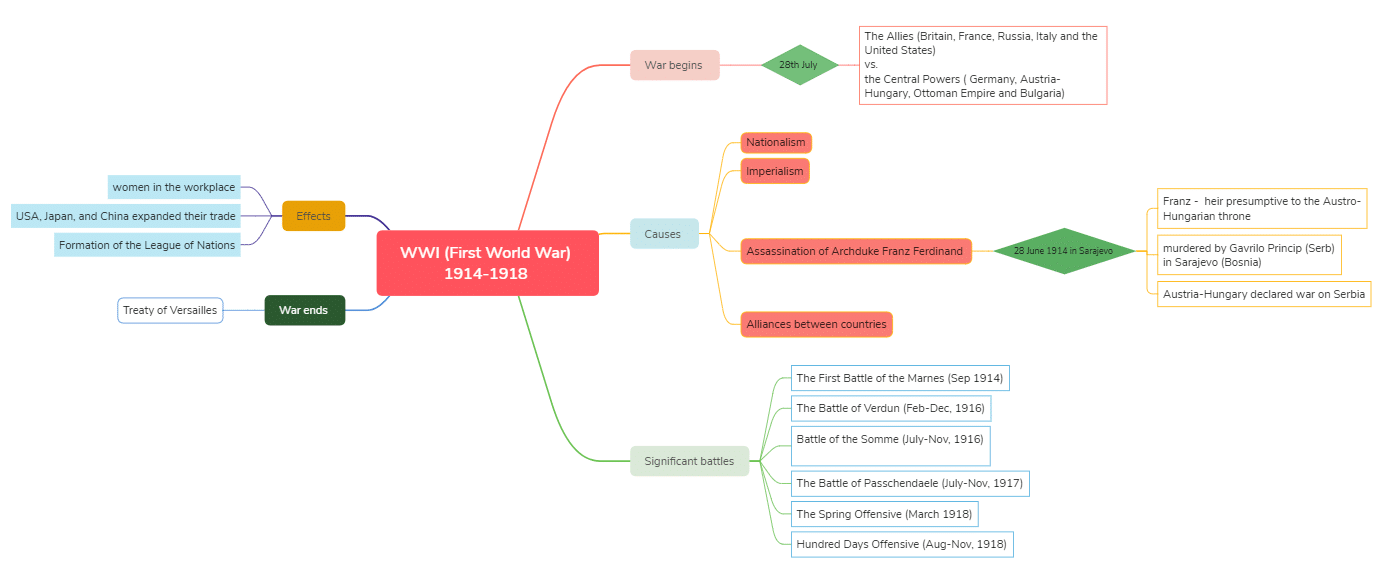Students are facing increasing pressure to master new concepts quickly. They face the prospect of entering competitive job markets, preparing for selective universities, and the pressure to perform well on standardized tests. Any tool that can help them learn and retain information more efficiently is a blessing. Traditional learning is no longer enough.
To that end, students and teachers alike are embracing mind mapping as a valuable learning tool. Thanks to mind mapping software, students can approach learning materials differently, and succeed better at processing new information. Retention rates also go up when students add mind mapping to their learning efforts.
What is Mind Mapping Software?
Mind Mapping is a process where learners use a graphical format to record ideas and information about a particular topic. They don’t have to concern themselves with putting things into any particular sequence or using a linear format. Mind Mapping software provides the means for them to do this through their device. Later, they can access the mindmaps they have created, reorganize them, turn them into traditional notes, or simply use them as a reference.
Mind Mapping is used in many disciplines. Marketers, financial planners, and many others use mind mapping. Here, we’ll go over eight ways that mind mapping can be used to improve learning at colleges and universities and beyond.
1. It Makes Classroom Note Taking More Efficient
For many students, taking notes consists of furiously writing line after line of text as the instructor speaks. The goal, to record as much information as possible in hopes of capturing something important. The resulting notes are often chronological with very little to make the important points stand out. The student must then reorganize their notes and pick out the important points in order for them to be useful.
With mind mapping, the student begins with the main topic the teacher is covering. They identify the primary topic being covered based on the syllabus or other information. Then, they use mind mapping to capture the relevant details during the lecture. As a result, they can focus more on what’s being taught than on writing down every detail.
2. Students Can Solve Problems Better
Students are often asked to spend class time solving complicated problems. In doing so, they often test several solutions before finding the one that works. Without an organized approach, students can waste time, and become frustrated, duplicating efforts. With mind mapping, students can take a more organized approach. They can record ideas they try and the steps they take during each attempt, as well as the results. Then, when the right idea is found, they can easily find it when faced with a similar problem in the future.
3. Mastering Grammar
Whether we’re talking about ESL students mastering a new language, or emerging readers and writers, grammar mastery is imperative. Without it, both expressive and receptive language learning is difficult. The problem is that grammar learning can be complex and tedious. Even something like mastering irregular verbs in English can be challenging.
Thanks to their radiating structure, mind maps can be a useful tool here. They start with a centralized grammar rule. Then, every detail of the rule can be illustrated with related examples.
There’s another small, but important detail to consider. Grammar is often regarded as stuffy, and boring. The visual nature of mind maps can make these lessons more interesting, and more engaging.
4. Summarizing Books
One way for teachers to assess whether or not students understand what they’ve read is to ask them to provide written summaries. The problem is that these summaries often consist of rewritten passages from the book, and chronological retellings of the story (e.g.: Huck Finn did this, then Tom Sawyer said that). While this serves as proof the student read the material it doesn’t show they understand the various themes in the book. It certainly doesn’t contain any of the student’s own insights.
When students engage in mind mapping instead of linear note-taking, they are forced to think in terms of themes and concepts rather than what they can memorize or copy from the book.
To learn more, read our article about how to summarize a book with a mind map.
5. Improving Vocabulary
If you can master vocabulary, you are well on your way to understanding a variety of topics. If you don’t get vocabulary right, your knowledge is very limited. Memorizing words and definitions is something that simply doesn’t work for many students.
Mind Mapping allows you to group words into similar groups. Then, when you master a new word, you simply add it to one of the existing groups you’ve created. If it doesn’t fit, it may be time to create a new group.
6. Create Better Presentations Quickly
Both students use presentations in class. Teachers do it to enhance their lessons and improve understanding. Students use presentations to share what they have learned on a particular topic. The most popular of these are Powerpoint and Slideshare.
The only problem is that slideshows only present a single piece of the overall concept at a time. There’s nothing that really shows the entire picture. Mind Mapping can be used to fill in that gap and build awesome presentations. They can be used to show how everything fits together. Further, mind maps can be modified according to the audience. You can show one audience a subset of the map, then the entire mind map to another. Mindmaps can also be incorporated into slideshows.
7. Boosting Creative Thinking
Textbooks, essays, and traditional notes have a top-down structure that tends to limit students’ thinking. The radiant structure of a mind map invites a bit more creativity. Rather than imitating what they have already seen, students tend to be more open-minded and expressive.
Think about a class lecture. Instead of having students take notes or engage in group discussions, instructors can begin with blank mind maps that students can fill in during class discussions. Since students’ ideas only have to be related to the central theme, they don’t feel obligated to follow the same line of thought throughout the discussion. This helps them to build their creative thinking skills.
8. Detail Complex Concepts
Some students learn well by listening to their instructors explaining concepts to them. Others do well reading. There are some who are tactile learners, and who do well through project-based learning. Mind maps or concept maps work very effectively as a tool for visual learners to see how the various parts of a complicated process or concept come together.
Take the First World War or the Great War as an example. That’s an extraordinarily complex subject. The build-up to the war involved economics, politics, race, etc. Then there’s the matter of the war itself, the alliances, and so on. A mind map can be used to effectively explain all of this in a visual format that allows students to consume one piece of information at a time.
Final Thoughts
These are just a few ways that students and teachers can apply mind mapping as a way to improve the learning process. Mind maps can help students to better understand various concepts, to improve retention, and to simply make learning more interesting. It’s definitely worthwhile to apply mind mapping to different areas of instruction and study.
About The Author
Daniela McVicker is a freelance writer, blogger, and editor at TopWritersReview. She graduated from Durham University and has an MA in psychological science. Her passion is traveling and finding ways to enrich students’ learning experiences.







